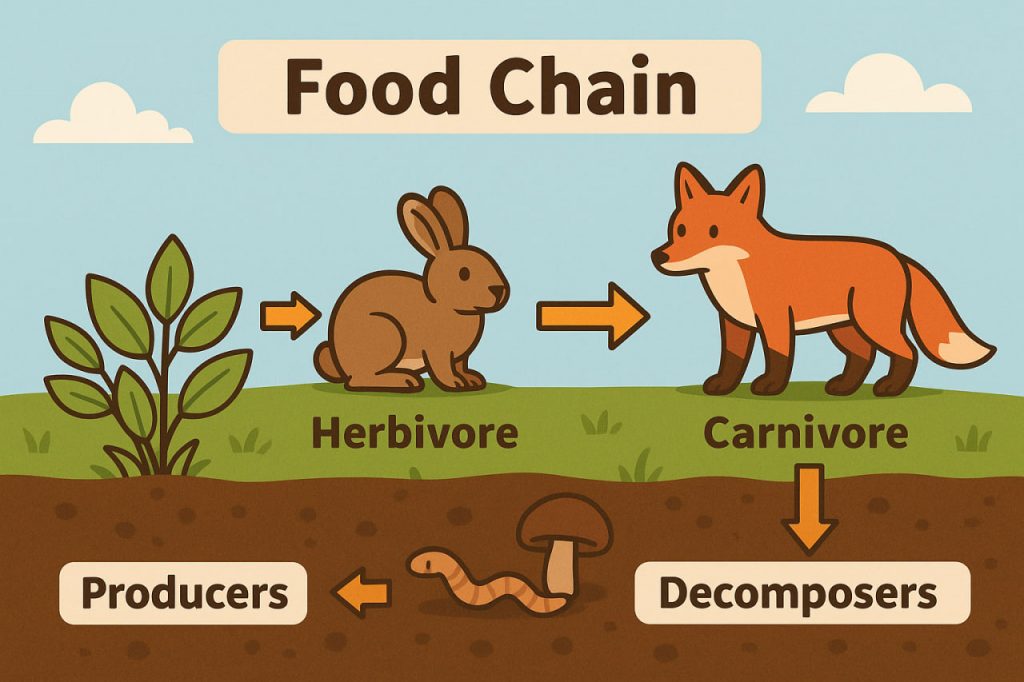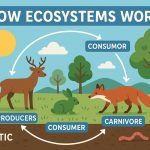A food chain is a sequence that shows how energy and nutrients flow through an ecosystem. Each organism in the chain feeds on the one below it and is, in turn, eaten by the one above. Food chains are vital to understanding how ecosystems stay balanced and how all living things are interconnected.
The Basic Structure of a Food Chain
A typical food chain has four main levels, each with a specific role:
1. Producers (Autotrophs)
- Usually plants or algae
- Use photosynthesis to convert sunlight into energy
- Form the base of all food chains
2. Primary Consumers (Herbivores)
- Eat the producers
- Examples: rabbits, deer, caterpillars, zooplankton
3. Secondary Consumers (Carnivores/Omnivores)
- Eat the primary consumers
- Examples: snakes, frogs, small fish, birds
4. Tertiary Consumers (Top Predators)
- Eat secondary consumers
- Have few or no predators themselves
- Examples: eagles, wolves, sharks
Decomposers (Bonus Level)
- Fungi, bacteria, and insects that break down dead organisms
- Return nutrients to the soil, supporting producers again
Example of a Simple Food Chain (Forest)
Grass → Grasshopper → Frog → Snake → Hawk
Each step is called a trophic level, and energy is passed from one to the next—but only about 10% of the energy transfers upward at each level. The rest is lost as heat or used by the organism.
Food Webs vs. Food Chains
In nature, food relationships are rarely linear. Many species eat more than one kind of food, forming food webs—a complex network of interconnected food chains. Food webs offer greater stability and resilience to ecosystems.
Importance of Food Chains
- Show how energy flows through nature
- Help us understand predator-prey relationships
- Reveal the impact of species loss or environmental change
- Highlight the importance of each organism in keeping ecosystems healthy
Human Impact on Food Chains
Humans affect food chains in several ways:
- Overfishing or hunting can remove top predators
- Pollution can poison organisms at the bottom of the chain
- Climate change can shift the availability of food sources
- Invasive species can disrupt local balance
Protecting all levels of food chains is essential to keeping ecosystems alive.
Conclusion
Food chains are nature’s way of transferring energy from one organism to another. Whether in oceans, forests, or deserts, they help keep life balanced and connected. By studying food chains, we learn how every living thing has a role—and why preserving biodiversity is so important.
Glossary
- Trophic level: Each step in a food chain
- Producer: An organism that makes its own food (usually a plant)
- Consumer: An organism that eats other organisms for energy
- Decomposer: Organisms that break down dead material and recycle nutrients
- Food web: A complex system of overlapping food chains


